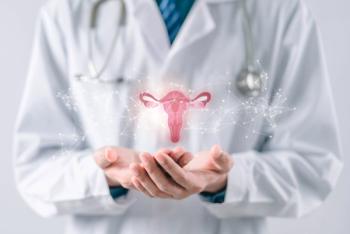
Mammography Screening and Overdiagnosis
The benefits and risks of breast cancer screening have often been debated by the clinical and epidemiological realms, with key arguments centering around overdiagnosis.
The benefits and risks of breast cancer screening have often been debated by the clinical and epidemiological realms, with key arguments centering around overdiagnosis. Successful screening programs must balance the benefit of improved survival and mortality rates because significant cancers are diagnosed at a more curable stage with the risk of an increase in rates of diagnosis and invasive treatment of clinically insignificant disease.
Data from a new study conducted in Norway show that mammography screening results in an overdiagnosis rate of 15% to 25%, which translates to 6 to 10 cases of breast cancer being overdiagnosed for every 2500 women screened.1 Using records from a nationwide mammography screening program that was gradually implemented from 1996 to 2005, researchers compared the rates of breast cancer in counties where the screening program had been implemented with rates of breast cancer in counties where the screening program had not yet begun. Historical data for a first diagnosis of breast cancer given between 1986 and 1995 were also collected. From 1986 to 2005, a total of 39,888 cases of invasive breast cancer were identified. In women between the ages of 50 and 69 years (the age range of women invited for screening), 18,708 cases of breast cancer were identified; of those, 7793 cases were diagnosed after the screening program was implemented.
These findings are similar to those from other recently published studies. In population-based screening studies, estimates of overdiagnosis have ranged from 1% to 54%.2 In a recent study of women aged 40 to 49 who had a mammography as part of the Swedish service screening program, no significant overdiagnosis of breast cancer was found.3
Current screening guidelines for the early detection of breast cancer recommend yearly mammograms beginning at age 40 and continuing for as long as a woman is in good health.4 Since 1991, there has been a greater than 30% decrease in breast cancer mortality rates in the United States.5 This decrease is attributable to mammography screening and improved treatment modalities.
Pertinent Points:
- For every 2500 women screened for breast cancer, 6 to 10 women received an overdiagnosis, 20 women received a correct diagnosis, and 1 death was prevented.
- Yearly mammograms are recommended for women 40 years and older in the United States.
- From a clinical standpoint, simple observation of early breast cancer is not appropriate.
References:
References
1. Kalager M, Adami HO, Bretthauer M, Tamimi RM. Overdiagnosis of invasive breast cancer due to mammography screening: results from the Norwegian screening program. Ann Intern Med. 2012;156:491-499
2. de Gelder R, Jeijnskijk EA, van Ravesteyn NT, et al. Interpreting overdiagnosis estimates in population-based mammography screening. Epidemiol Rev. 2011;33:111-121.
3. Hellquist BN, Duffy SW, Nystrom L, Jonsson H. Overdiagnosis in the population-based service screening programme with mammography for women aged 40 to 49 years in Sweden. J Med Screen. 2012;19:14-19.
4. American Cancer Society.
American Cancer Society guidelines for the early detection of cancer
. Accessed May 3, 2012.
5. Brawley O.
“Overdiagnosis” of breast cancer may be higher than thought
. Accessed May 4, 2012.
Newsletter
Get the latest clinical updates, case studies, and expert commentary in obstetric and gynecologic care. Sign up now to stay informed.










